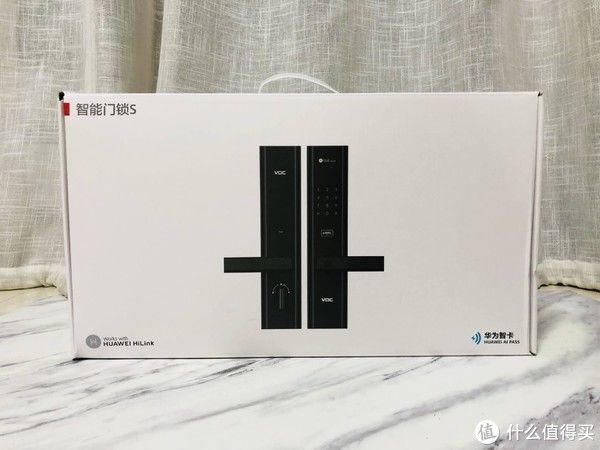еҶІеӨ©йҰҷйҳөйҖҸй•ҝе®үпјҢж»ЎеҹҺе°ҪеёҰй»„йҮ‘з”ІгҖӮиҝҷзҜҮж–Үз« дё»иҰҒи®Іиҝ°AndroidеёғеұҖж ·ејҸзӣёе…ізҡ„зҹҘиҜҶпјҢеёҢжңӣиғҪдёәдҪ жҸҗдҫӣеё®еҠ©гҖӮ
жң¬зҜҮд»Ӣз»ҚдёҖдёӢandroidдёӯзҡ„еҮ з§Қеёёз”Ёзҡ„еёғеұҖпјҢдё»иҰҒд»Ӣз»ҚеҶ…е®№жңүпјҡ
В·Viewи§Ҷеӣҫ
В·LinearLayout
В·RelativeLayout
еңЁд»Ӣз»ҚеёғеұҖд№ӢеүҚпјҢжҲ‘们йҰ–е…ҲиҰҒдәҶи§Ји§ҶеӣҫViewзҡ„еҹәжң¬еұһжҖ§пјҢеӣ дёәжүҖжңүзҡ„жҺ§д»¶е’ҢеёғеұҖйғҪжҳҜзӣҙжҺҘжҲ–й—ҙжҺҘз”ұViewжҙҫз”ҹиҖҢжқҘзҡ„пјҢж•…иҖҢViewзұ»зҡ„еҹәжң¬еұһжҖ§е’Ңж–№жі•жҳҜеҗ„жҺ§д»¶е’ҢеёғеұҖйҖҡз”Ёзҡ„гҖӮ
гҖҗAndroidеёғеұҖж ·ејҸгҖ‘еңЁиҝҷйҮҢд»Ӣз»ҚдёҖдёӢViewеңЁXMLж–Ү件дёӯзҡ„еёёз”ЁеұһжҖ§е®ҡд№ү
В·layout_margin:жҢҮе®ҡиҜҘи§ҶеӣҫдёҺе‘Ёеӣҙи§Ҷеӣҫд№Ӣй—ҙзҡ„з©әзҷҪи·қзҰ»пјҲеҢ…жӢ¬дёҠдёӢе·ҰеҸіпјүпјҢеҸҰеҸҜеҲҶеҲ«еҶҷжҲҗlayout_marginTopгҖҒlayout_marginLeftгҖҒlayout_marginRightгҖҒlayout_marginBottom,е’ҢhtmlдёӯmarginдҪңз”Ёзӣёдјј
В·minWidth:жҢҮе®ҡиҜҘи§Ҷеӣҫзҡ„жңҖе°Ҹе®ҪеәҰ
В·minHeight:жҢҮе®ҡиҜҘи§Ҷеӣҫеҫ—еҲ°жңҖе°Ҹй«ҳеәҰ
В·padding:жҢҮе®ҡиҜҘи§Ҷеӣҫзҡ„еҶ…иҫ№и·қгҖӮеҗҢж ·жңүpaddingBottomгҖҒpaddingTopгҖҒpaddingLeftгҖҒpaddingRightеұһжҖ§
В·visable:жҢҮе®ҡиҜҘи§Ҷеӣҫзҡ„еҸҜи§Ҷзұ»еһӢпјҲvisable еҸҜи§Ғпјӣinvisible дёҚеҸҜи§ҒдҪҶжҳҜеҚ дҪҚпјӣgone ж¶ҲеӨұпјҢдёҚеҸҜи§Ғдё”дёҚеҚ дҪҚпјү
В·layout_gravity:жҢҮе®ҡиҜҘи§ҶеӣҫдёҺдёҠзә§и§Ҷеӣҫзҡ„еҜ№йҪҗж–№ејҸпјҲleft,right,top,bottom,center,center_horizontal,center_verticalпјү
В·layout_widthгҖҒlayout_heightгҖҒbackgroundгҖҒidдёҚеҶҚиҜҰиҝ°
еңЁд»Јз Ғдёӯзҡ„еёёз”Ёи®ҫзҪ®ж–№жі•иҜҙжҳҺпјҡ
В·setLayoutParams:и®ҫзҪ®и§Ҷеӣҫе®Ҫй«ҳпјҢеҸӮж•°еҜ№иұЎзҡ„жһ„йҖ еҮҪж•°еҸҜд»Ҙи®ҫзҪ®и§Ҷеӣҫзҡ„е®Ҫй«ҳпјҢе…¶дёӯпјҢжңүLayoutParams.MATCH_PARENTе’ҢLayoutParams.WRAP_CONTENT
В·setBackgroundcolor:и®ҫзҪ®иғҢжҷҜйўңиүІ
В·setBackgroundDrawable:и®ҫзҪ®иғҢжҷҜеӣҫзүҮ
В·setBackgroundResourse:и®ҫзҪ®иғҢжҷҜиө„жәҗID
В·setPaddingе’ҢsetVisabilityдёҚеҶҚиҜҰиҝ°
дёӢйқўжҲ‘们йҖҡиҝҮд»Јз Ғи§ӮеҜҹж•Ҳжһңпјҡ
< ?xml version="1.0" encoding="utf-8"?> < LinearLayout xmlns:android="http://schemas.android.com/apk/res/android" xmlns:tools="http://schemas.android.com/tools" android:layout_width="match_parent" android:layout_height="300dp" android:background="#00aaff" android:orientation="vertical" android:padding="5dp"> < LinearLayout android:layout_width="match_parent" android:layout_height="match_parent" android:layout_margin="20dp" android:background="#ffff99" android:padding="60dp"> < View android:layout_width="match_parent" android:layout_height="match_parent" android:background="#ff0000"/> < /LinearLayout> < /LinearLayout>
ж•ҲжһңеҰӮдёӢпјҢеҗҢwebеүҚз«ҜејҖеҸ‘ж•ҲжһңзӣёеҗҢпјҢдёҚеҶҚиҜҰиҝ°пјҡ

ж–Үз« еӣҫзүҮ
пјҢпјҢ
зәҝжҖ§еёғеұҖLinearLayout
LinearLayoutжңүиҝҷж ·еҮ дёӘзү№жңүзҡ„xmlеұһжҖ§пјҡ
В·orientation:жҢҮе®ҡзәҝжҖ§еёғеұҖзҡ„ж–№еҗ‘гҖӮhorizontalпјҲй»ҳи®ӨпјүиЎЁзӨәж°ҙе№іеёғеұҖпјҢverticalиЎЁзӨәеһӮзӣҙеёғеұҖ
В·gravity:жҢҮе®ҡеёғеұҖеҶ…йғЁи§ҶеӣҫдёҺжң¬зәҝжҖ§еёғеұҖзҡ„еҜ№йҪҗж–№ејҸпјҢеҸ–еҖјеҗҢlayout_gravity
`layout_weight:жҢҮе®ҡеҪ“еүҚи§ҶеӣҫеңЁе®ҪеәҰдёҠеҚ зҡ„жқғйҮҚпјҢеҰӮжһңжҢҮе®ҡзҡ„жҳҜе®ҪеәҰдёҠзҡ„жқғйҮҚпјҢе°ұиҰҒеҗҢж—¶и®ҫзҪ®layout_widthдёә0dpпјҢй«ҳеәҰеҗҢзҗҶ
жҺҘдёӢжқҘйҮҚзӮ№и§ЈйҮҠlayout_gravityе’Ңgravityзҡ„еҢәеҲ«
еүҚйқўиҜҙиҝҮпјҢlayout_gravityжҢҮе®ҡиҜҘи§ҶеӣҫдёҺдёҠзә§и§Ҷеӣҫзҡ„еҜ№йҪҗж–№ејҸпјҢиҖҢgravityжҢҮе®ҡеёғеұҖеҶ…йғЁдёҺжң¬еёғеұҖзҡ„еҜ№йҪҗж–№ејҸпјҢе…·дҪ“дҫӢеӯҗеҰӮдёӢпјҡ
< ?xml version="1.0" encoding="utf-8"?> < LinearLayout xmlns:android="http://schemas.android.com/apk/res/android" xmlns:tools="http://schemas.android.com/tools" android:layout_width="match_parent" android:layout_height="300dp" android:background="#ffff99" android:orientation="horizontal" android:padding="5dp"> < LinearLayout android:layout_width="0dp" android:layout_height="200dp" android:layout_weight="1" android:layout_gravity="bottom" android:gravity="left" android:layout_margin="10dp" android:background="#ff0000" android:padding="10dp"> < View android:layout_width="100dp" android:layout_height="100dp" android:background="#00ffff"/> < /LinearLayout> < LinearLayout android:layout_width="0dp" android:layout_height="200dp" android:layout_weight="1" android:layout_gravity="top" android:gravity="right" android:background="#ff0000" android:layout_margin="10dp" android:padding="10dp" android:orientation="vertical"> < View android:layout_width="100dp" android:layout_height="100dp" android:background="#00ffff"/> < /LinearLayout> < /LinearLayout>
ж•ҲжһңеҰӮдёӢпјҡ

ж–Үз« еӣҫзүҮ
еҸҜд»Ҙз®Җи®°дёәпјҢlayout_gravityжҳҜеӯҗеҜ№зҲ¶дҪҝз”ЁпјҢgravityжҳҜзҲ¶еҜ№еӯҗдҪҝз”Ё
зӣёеҜ№еёғеұҖRelativeLayout
RelativeLayoutдёӢзә§и§Ҷеӣҫзҡ„дҪҚзҪ®жҳҜзӣёеҜ№дҪҚзҪ®пјҢеҫ—жңүе…·дҪ“зҡ„еҸӮз…§зү©жүҚиғҪзЎ®е®ҡжңҖз»ҲдҪҚзҪ®гҖӮеҰӮжһңдёҚи®ҫе®ҡдёӢзә§и§Ҷеӣҫзҡ„еҸӮз…§зү©пјҢйӮЈд№ҲдёӢзә§и§Ҷеӣҫй»ҳи®ӨжҳҫзӨәеңЁRelativeеҶ…йғЁзҡ„е·ҰдёҠи§’гҖӮз”ЁдәҺзЎ®е®ҡи§ҶеӣҫдҪҚзҪ®зҡ„еҸӮз…§зү©еҸҜд»ҘжҳҜиҜҘи§Ҷеӣҫзҡ„е№ізә§и§Ҷеӣҫд№ҹеҸҜд»ҘжҳҜиҜҘи§Ҷеӣҫзҡ„дёҠзә§и§ҶеӣҫпјҢиҝҷйҮҢдёҚеҶҚеҲ—еҮәе…·дҪ“еұһжҖ§пјҢеӣ дёәе®ғ们йҖҡиҝҮеұһжҖ§еҗҚзҡ„еӯ—йқўж„ҸжҖқе°ұеҸҜд»ҘзҗҶи§ЈпјҢжҲ‘们зӣҙжҺҘд»Јз ҒзңӢзңӢеҗ„з§ҚеұһжҖ§еә”з”Ёзҡ„ж•Ҳжһңпјҡ
< ?xml version="1.0" encoding="utf-8"?> < RelativeLayout xmlns:android="http://schemas.android.com/apk/res/android" xmlns:tools="http://schemas.android.com/tools" android:layout_width="match_parent" android:layout_height="500dp" > < Button android:layout_width="wrap_content" android:layout_height="wrap_content" android:id="@+id/btn_center" android:layout_centerInParent="true" android:text="жҲ‘еңЁдёӯй—ҙ"/> < Button android:layout_width="wrap_content" android:layout_height="wrap_content" android:id="@+id/btn_center_horizontal" android:layout_centerHorizontal="true" android:text="жҲ‘еңЁж°ҙе№ідёӯй—ҙ"/> < Button android:layout_width="wrap_content" android:layout_height="wrap_content" android:id="@+id/btn_center_vertical" android:layout_centerVertical="true" android:text="жҲ‘еңЁеһӮзӣҙдёӯй—ҙ"/> < Button android:layout_width="wrap_content" android:layout_height="wrap_content" android:id="@+id/btn_parent_left" android:layout_marginTop="100dp" android:layout_alignParentLeft="true" android:text="жҲ‘и·ҹдёҠзә§е·Ұиҫ№еҜ№йҪҗ"/> < Button android:layout_width="wrap_content" android:layout_height="wrap_content" android:id="@+id/btn_parent_top" android:layout_alignParentTop="true" android:text="жҲ‘и·ҹдёҠзә§йЎ¶йғЁеҜ№йҪҗ"/> < Button android:layout_width="wrap_content" android:layout_height="wrap_content" android:id="@+id/btn_parent_right" android:layout_alignParentRight="true" android:text="жҲ‘и·ҹдёҠзә§еҸіиҫ№еҜ№йҪҗ"/> < Button android:layout_width="wrap_content" android:layout_height="wrap_content" android:id="@+id/btn_parent_bottom" android:layout_alignParentBottom="true" android:layout_centerHorizontal="true" android:text="жҲ‘и·ҹдёҠзә§еә•йғЁеҜ№йҪҗ"/> < Button android:layout_width="wrap_content" android:layout_height="wrap_content" android:id="@+id/btn_left_bottom" android:layout_toLeftOf="@+id/btn_parent_bottom" android:layout_alignTop="@+id/btn_parent_bottom" android:text="жҲ‘еңЁеә•йғЁе·Ұиҫ№"/> < Button android:layout_width="wrap_content" android:layout_height="wrap_content" android:id="@+id/btn_right_bottom" android:layout_toRightOf="@+id/btn_parent_bottom" android:layout_alignTop="@+id/btn_parent_bottom" android:text="жҲ‘еңЁеә•йғЁеҸіиҫ№"/> < Button android:layout_width="wrap_content" android:layout_height="wrap_content" android:id="@+id/btn_above_center" android:layout_above="@+id/btn_center" android:layout_alignLeft="@id/btn_center" android:text="жҲ‘еңЁдёӯй—ҙдёҠйқў"/> < Button android:layout_width="wrap_content" android:layout_height="wrap_content" android:id="@+id/btn_below_center" android:layout_below="@+id/btn_center" android:layout_alignLeft="@id/btn_center" android:text="жҲ‘еңЁдёӯй—ҙдёӢйқў"/> < /RelativeLayout>
ж•ҲжһңеҰӮеӣҫпјҡ

ж–Үз« еӣҫзүҮ
д»Јз ҒеҫҲз®ҖеҚ•пјҢиҝҷйҮҢдёҚеҶҚиҜҰз»Ҷд»Ӣз»ҚгҖӮ
дёӢйқўеңЁд»Јз Ғдёӯз»ҷRelativeLayoutеҠЁжҖҒж·»еҠ еӯҗи§Ҷеӣҫ并жҢҮе®ҡеӯҗи§Ҷеӣҫзҡ„зӣёеҜ№дҪҚзҪ®
package com.example.animator.android_learning; import android.content.Context; import android.graphics.Color; import android.support.v7.app.ActionBarActivity; import android.os.Bundle; import android.util.DisplayMetrics; import android.view.View; import android.view.Window; import android.view.WindowManager; import android.widget.Button; import android.widget.RelativeLayout; import android.widget.TextView; public class MainActivity extends ActionBarActivity {RelativeLayout relativeLayout; Button btn_1; Button btn_2; Button btn_3; Button btn_4; Button btn_5; Button btn_6; Button btn_7; Button btn_8; Button btn_9; @Override protected void onCreate(Bundle savedInstanceState) { super.onCreate(savedInstanceState); setContentView(R.layout.activity_main); relativeLayout= (RelativeLayout) findViewById(R.id.r1_content); btn_1= (Button) findViewById(R.id.btn_1); btn_2= (Button) findViewById(R.id.btn_2); btn_3= (Button) findViewById(R.id.btn_3); btn_4= (Button) findViewById(R.id.btn_4); btn_5= (Button) findViewById(R.id.btn_5); btn_6= (Button) findViewById(R.id.btn_6); btn_7= (Button) findViewById(R.id.btn_7); btn_8= (Button) findViewById(R.id.btn_8); btn_9= (Button) findViewById(R.id.btn_9); btn_1.setOnClickListener(new View.OnClickListener() { @Override public void onClick(View view) { addNewView(RelativeLayout.LEFT_OF,RelativeLayout.ALIGN_TOP,R.id.btn_1); } }); btn_2.setOnClickListener(new View.OnClickListener() { @Override public void onClick(View view) { addNewView(RelativeLayout.ABOVE,RelativeLayout.ALIGN_LEFT,R.id.btn_2); } }); btn_3.setOnClickListener(new View.OnClickListener() { @Override public void onClick(View view) { addNewView(RelativeLayout.RIGHT_OF,RelativeLayout.ALIGN_TOP,R.id.btn_3); } }); btn_4.setOnClickListener(new View.OnClickListener() { @Override public void onClick(View view) { addNewView(RelativeLayout.BELOW,RelativeLayout.ALIGN_LEFT,R.id.btn_4); } }); btn_5.setOnClickListener(new View.OnClickListener() { @Override public void onClick(View view) { addNewView(RelativeLayout.CENTER_IN_PARENT,RelativeLayout.ALIGN_BASELINE,R.id.btn_5); } }); btn_6.setOnClickListener(new View.OnClickListener() { @Override public void onClick(View view) { addNewView(RelativeLayout.ALIGN_PARENT_LEFT,0,R.id.btn_6); } }); btn_7.setOnClickListener(new View.OnClickListener() { @Override public void onClick(View view) { addNewView(RelativeLayout.ALIGN_PARENT_TOP,0,R.id.btn_7); } }); btn_8.setOnClickListener(new View.OnClickListener() { @Override public void onClick(View view) { addNewView(RelativeLayout.ALIGN_PARENT_RIGHT,0,R.id.btn_8); } }); btn_9.setOnClickListener(new View.OnClickListener() { @Override public void onClick(View view) { addNewView(RelativeLayout.ALIGN_PARENT_BOTTOM,0,R.id.btn_9); } }); }private void addNewView(int firstAlign,int secondAlign,int referId){ //еҲӣе»әдёҖдёӘж–°зҡ„и§ҶеӣҫеҜ№иұЎ View v=new View(this); //жҠҠиҜҘи§Ҷеӣҫзҡ„иғҢжҷҜи®ҫзҪ®дёәеҚҠйҖҸжҳҺзҡ„з»ҝиүІ v.setBackgroundColor(0xaa66ff66); //еЈ°жҳҺдёҖдёӘеёғеұҖеҸӮж•°пјҢе…¶дёӯе®ҪеәҰдёә100dp,й«ҳеәҰд№ҹдёә100dp RelativeLayout.LayoutParams r1_params=new RelativeLayout.LayoutParams(dip2px(this,100),dip2px(this,100)); //з»ҷеёғеұҖеҸӮж•°ж·»еҠ 第дёҖдёӘзӣёеҜ№дҪҚзҪ®зҡ„规еҲҷпјҢfirstAlignд»ЈиЎЁдҪҚзҪ®зұ»еһӢпјҢreferIdд»ЈиЎЁеҸӮиҖғеҜ№иұЎ r1_params.addRule(firstAlign,referId); if(secondAlign> =0){ //еҰӮжһңеӯҳеңЁз¬¬дәҢдёӘзӣёеҜ№дҪҚзҪ®пјҢеҲҷеҗҢж—¶з»ҷеёғеұҖж·»еҠ 第дәҢдёӘзӣёеҜ№дҪҚзҪ®зҡ„规еҲҷ r1_params.addRule(secondAlign,referId); }//з»ҷиҜҘи§Ҷеӣҫи®ҫзҪ®еёғеұҖеҸӮж•° v.setLayoutParams(r1_params); //и®ҫзҪ®иҜҘи§Ҷеӣҫзҡ„й•ҝжҢүзӣ‘еҗ¬еҷЁ v.setOnLongClickListener(new View.OnLongClickListener() { @Override public boolean onLongClick(View view) { //дёҖж—Ұзӣ‘еҗ¬еҲ°й•ҝжҢүдәӢ件пјҢе°ұд»ҺзӣёеҜ№еёғеұҖдёӯеҲ йҷӨиҜҘи§Ҷеӣҫ relativeLayout.removeView(view); return true; } }); //еҫҖзӣёеҜ№еёғеұҖдёӯж·»еҠ иҜҘи§Ҷеӣҫ relativeLayout.addView(v); }//ж №жҚ®жүӢжңәзҡ„еҲҶиҫЁзҺҮд»ҺdpеҚ•дҪҚиҪ¬жҚўжҲҗpxеҚ•дҪҚ public static int dip2px(Context context,float dpValue){ //иҺ·еҸ–еҪ“еүҚжүӢжңәзҡ„еғҸзҙ еҜҶеәҰ final float scale=context.getResources().getDisplayMetrics().density; return (int)(dpValue*scale+0.5f); //еӣӣиҲҚдә”е…ҘеҸ–ж•ҙ }//ж №жҚ®жүӢжңәзҡ„еҲҶиҫЁзҺҮд»ҺpxеҚ•дҪҚиҪ¬жҚўжҲҗdpеҚ•дҪҚ public static int px2dip(Context context,float pxValue){ //иҺ·еҸ–еҪ“еүҚжүӢжңәзҡ„еғҸзҙ еҜҶеәҰ final float scale=context.getResources().getDisplayMetrics().density; return (int)(pxValue/scale+0.5f); //еӣӣиҲҚдә”е…ҘеҸ–ж•ҙ }public static int getScreenWidth(Context context){ //д»Һзі»з»ҹжңҚеҠЎдёӯиҺ·еҸ–зӘ—еҸЈз®ЎзҗҶеҷЁ WindowManager windowManager=(WindowManager)context.getSystemService(context.WINDOW_SERVICE); DisplayMetrics displayMetrics=new DisplayMetrics(); //д»Һй»ҳи®ӨжҳҫзӨәеҷЁдёӯиҺ·еҸ–жҳҫзӨәеҸӮж•°дҝқеӯҳеҲ°displayMetricsеҜ№иұЎдёӯ windowManager.getDefaultDisplay().getMetrics(displayMetrics); return displayMetrics.widthPixels; //иҝ”еӣһеұҸ幕зҡ„е®ҪеәҰж•°еҖј }public static int getScreenHeight(Context context){ //д»Һзі»з»ҹжңҚеҠЎдёӯиҺ·еҸ–зӘ—еҸЈз®ЎзҗҶеҷЁ WindowManager windowManager=(WindowManager)context.getSystemService(context.WINDOW_SERVICE); DisplayMetrics displayMetrics=new DisplayMetrics(); //д»Һй»ҳи®ӨжҳҫзӨәеҷЁдёӯиҺ·еҸ–жҳҫзӨәеҸӮж•°дҝқеӯҳеҲ°displayMetricsеҜ№иұЎдёӯ windowManager.getDefaultDisplay().getMetrics(displayMetrics); return displayMetrics.heightPixels; //иҝ”еӣһеұҸ幕зҡ„й«ҳеәҰж•°еҖј }public static float getScreenDensity(Context context){ //д»Һзі»з»ҹжңҚеҠЎдёӯиҺ·еҸ–зӘ—еҸЈз®ЎзҗҶеҷЁ WindowManager windowManager=(WindowManager)context.getSystemService(context.WINDOW_SERVICE); DisplayMetrics displayMetrics=new DisplayMetrics(); //д»Һй»ҳи®ӨжҳҫзӨәеҷЁдёӯиҺ·еҸ–жҳҫзӨәеҸӮж•°дҝқеӯҳеҲ°displayMetricsеҜ№иұЎдёӯ windowManager.getDefaultDisplay().getMetrics(displayMetrics); return displayMetrics.density; //иҝ”еӣһеұҸ幕зҡ„й«ҳеәҰж•°еҖј } }
ж•ҲжһңеҰӮеӣҫпјҡ

ж–Үз« еӣҫзүҮ
жҢүй’®еёғеұҖеҫҲз®ҖеҚ•пјҢиҜ»иҖ…еҸҜж №жҚ®дёҠиҝ°relativelayoutеёғеұҖж ·ејҸжөӢиҜ•иҮӘиЎҢзј–еҶҷxmlд»Јз Ғ
жҺЁиҚҗйҳ…иҜ»
- openwrtзј–иҜ‘ -- ж·»еҠ з”ЁжҲ·иҮӘе®ҡд№үapp
- ж•°жҚ®еә“: AndroidдҪҝз”ЁJDBCиҝһжҺҘж•°жҚ®еә“е®һзҺ°еўһ еҲ иҜҘ жҹҘ ж“ҚдҪң(5.0зүҲжң¬)
- MyBatis mapperи®°еҪ•
- VS 2019ејҖеҸ‘APPз•Ңйқўе’Ңд»Јз Ғ
- Android Studio иҷҡжӢҹжңәиҝҗиЎҢй”ҷиҜҜпјҲThe ADB binary found at XX is obsolete and ...пјүзҙўжҖ§жҚўжҲҗзңҹжңәи°ғиҜ•
- еҲ©з”Ёз”ҹжҲҗеҜ№жҠ—зҪ‘з»ңд»ҺйҡҸжңәеҷӘеЈ°еҲӣе»әж•°жҚ®
- д»ҺжұӮи§Јж–№зЁӢејҸеҲ°ж·ұеәҰеӯҰд№ пјҲдёҖдёӘTensorFlow Pythonж•ҷзЁӢпјү
- TensorFlowе…Ҙй—ЁпјҲжңәеҷЁеӯҰд№ жқғеЁҒж•ҷзЁӢпјү
- еүҚз«ҜжЎҶжһ¶пјҲи§ЈеҶіж–№жЎҲиҝҳжҳҜиҶЁиғҖзҡ„й—®йўҳпјҲпјүпјү











